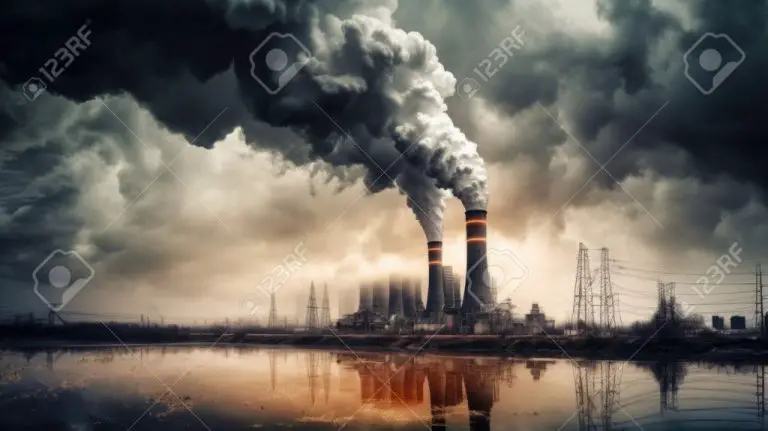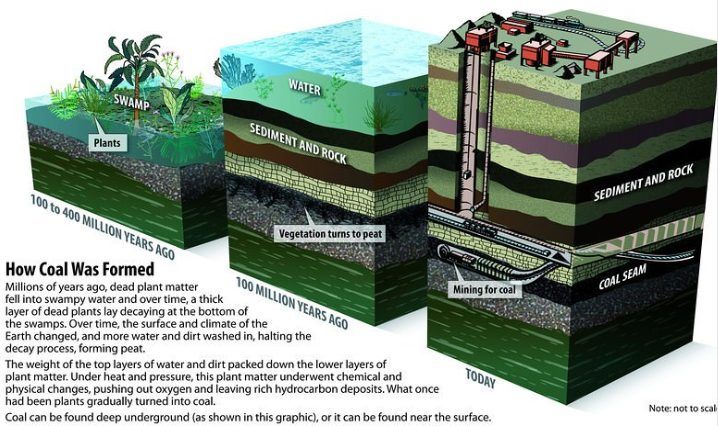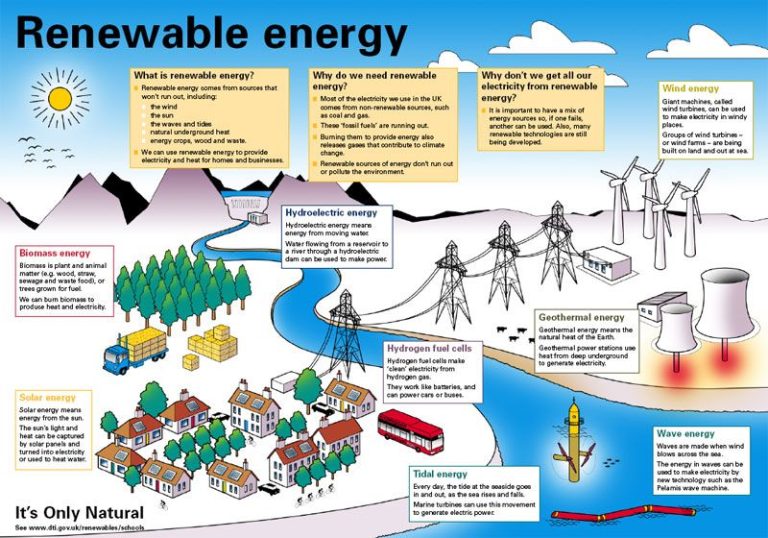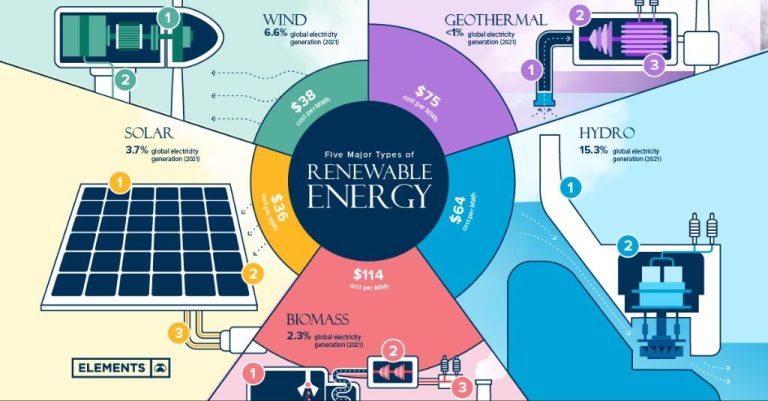Does Renewable Energy Matter For Reducing Carbon Dioxide Emissions?
With the era of industrialization came a rapid rise in the emissions of carbon dioxide and other greenhouse gases into the atmosphere. These emissions have led to global climate change, threatening ecosystems, economies, and human health across the planet. Scientific evidence overwhelmingly shows that the main cause of rising emissions is the burning of fossil fuels like coal, oil, and natural gas for energy. To combat climate change, there is an urgent need to transition away from fossil fuels and towards low-carbon renewable energy sources like solar, wind, hydroelectric, geothermal, and others. As this paper will demonstrate, renewable energy is absolutely critical for reducing global carbon dioxide emissions in order to limit further climate change. Studies consistently show that increasing the share of renewables leads to lower emissions, while challenges like intermittency can be addressed through policy, technology, and integration solutions. With the right strategies, renewable energy can enable deep decarbonization of the global energy system and put emissions on the decline. The stakes are high, as the future habitability of our planet depends on swiftly curbing emissions. This paper makes the case that renewable energy is key to achieving this goal.
Rising Emissions
Global carbon dioxide emissions have reached record high levels in recent years. According to a new report, current global carbon dioxide emissions persist at dangerously high levels, with 2021 seeing the highest ever annual increase.
These high and rising emissions have a major impact on climate change, as carbon dioxide is a key greenhouse gas. Studies show that if current global carbon dioxide emissions continue unchecked, the Earth’s climate system could reach 1.5°C above pre-industrial levels within just 7 years. Exceeding 1.5°C is expected to trigger catastrophic and potentially irreversible climate change impacts.
There is an urgent need to drastically reduce global carbon dioxide emissions in order to limit temperature rise and avert the worst climate change scenarios. Most experts agree emissions must fall by at least 50% by 2030 and reach net zero by 2050 to have a chance of meeting the 1.5°C goal.
Fossil Fuels Major Source
Burning fossil fuels like coal, oil, and natural gas is the primary driver of global carbon dioxide (CO2) emissions, accounting for around 75% of total emissions (1). The bulk of these emissions come from a few key sectors:
- Electricity and heat production (31% of 2010 emissions) – Burning coal, natural gas, and oil to generate electricity and provide heating is a major contributor. Coal makes up about 66% of CO2 emissions from the power sector due to its high carbon intensity (2).
- Transportation (14%) – The burning of gasoline, diesel, and other fuels in cars, trucks, ships, planes, and other vehicles is another major source of emissions.
- Industry (21%) – Factories and industrial processes like steel and cement production require significant energy inputs and generate substantial CO2 emissions, primarily from burning fossil fuels.
- Buildings (6.4%) – Heating, cooling, lighting, and operating homes, offices, and other buildings largely rely on electricity and natural gas, creating major emissions.
The breakdown highlights the dominance of fossil fuel combustion across economic sectors as the leading driver of global emissions. Transitioning these activities to low or zero-carbon alternatives is essential to meaningfully reduce emissions.
(1) https://www.istructe.org/IStructE/media/Public/Resources/a-short-guide-to-embodied-carbon-in-building-structures.pdf
(2) https://www.weforum.org/agenda/2020/02/these-are-the-top-10-causes-of-death-worldwide/
Transition to Renewables
In recent years, there has been rapid growth and expansion of renewable energy sources such as wind, solar, hydro, geothermal, and bioenergy. According to a report by the National Geographic, investments and capacity in renewables have grown 50-fold over the past 15 years (https://www.nationalgeographic.org/article/renewable-energy-explained/).
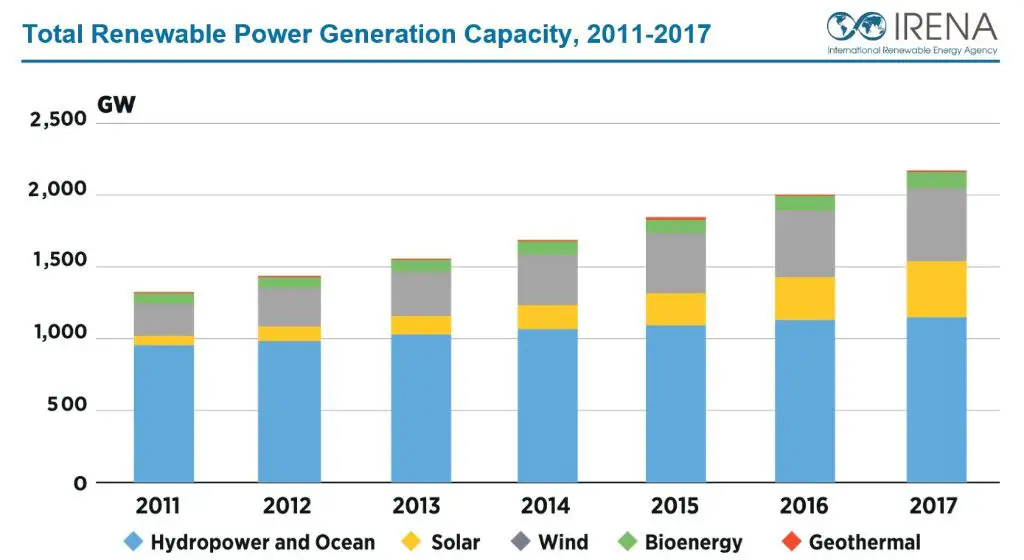
Wind and solar energy have seen particularly strong growth. The ability to deploy wind turbines and solar panels at large scale has enabled these technologies to account for the majority of new renewable capacity. Total wind power capacity has increased more than 5 times since 2010 (https://www.weforum.org/agenda/2022/06/state-of-renewable-energy-2022/). Solar capacity has grown even faster, with total global solar PV capacity rising over 28 times in the last decade.
Other renewables like hydropower, geothermal, and bioenergy have also expanded significantly. Hydropower remains the largest source of renewable electricity globally. Geothermal provides renewable baseload power by tapping into heat stored underground. Bioenergy converts organic matter into energy sources like biofuels. The potential for continued growth in all these renewables is immense.
Transitioning more electricity generation to renewable sources will be critical for reducing carbon emissions and mitigating climate change. With supportive policies and advances in technology, renewables have the capacity to transform the global energy system.
Renewables Reduce Emissions
There is strong evidence that increasing renewable energy reduces carbon dioxide emissions. A 2023 study comparing environmental impacts of energy sources across multiple countries found that nations with higher shares of renewables like wind and solar had significantly lower CO2 emissions from electricity generation [1]. For example, France, which gets over 70% of its electricity from nuclear power, emits around 50 grams of CO2 per kWh. In contrast, Denmark, which gets over 40% from wind power, emits around 180 grams per kWh. Clearly, the high penetration of zero-emission sources like renewables and nuclear results in lower system-wide emissions.
An analysis of over 25 countries from 2022 further supports this finding. Their study showed a strong negative correlation between renewable energy share and CO2 emissions – as renewable penetration increased, emissions decreased [2]. Notably, they found that doubling renewable share could reduce emissions by over 20% on average. This highlights the substantial emissions reduction potential from transitioning electricity grids to renewable power.
Challenges and Solutions
While renewable energy provides many benefits for reducing emissions, integrating intermittent sources like wind and solar into the grid also poses challenges. One key issue is intermittency – wind and solar generation fluctuates based on weather conditions and time of day. This variability makes balancing electricity supply and demand more complex (IRENA, 2015).
Lack of adequate transmission infrastructure also hinders renewable integration in some regions. Long-distance transmission allows sharing of generation assets over large geographical areas, helping to smooth out variability (PNNL, 2022).
There are solutions to overcome these challenges. Grid operators can forecast weather and generation more accurately with advanced analytics. Energy storage like batteries and pumped hydro can store excess renewable generation when available and dispatch it when needed (NREL, 2022).
Time-of-use electricity pricing encourages consumers to shift demand to times when renewable resources are most plentiful. Transmission capacity can be expanded through new power lines and conversion of AC to DC transmission which is more efficient over long distances (PNNL, 2022).
With the right policies, market rules, and technologies, intermittent renewable sources can be integrated smoothly into electricity systems at very high levels. Denmark already meets about 50% of its demand from wind power (NREL, 2022).
Policy Support Critical
Implementing effective policies to support renewable energy growth is critical. Research shows that government subsidies, tax credits, and renewable portfolio standards (RPS) that mandate utilities to use renewable energy are among the most effective mechanisms for driving renewable energy deployment and reducing emissions (Bersalli, 2020).
According to a comprehensive analysis across Europe and Latin America, feed-in tariffs and renewable energy auctions were found to be the most effective policies for adding renewable energy capacity and lowering carbon dioxide emissions (Bersalli, 2020). The study showed that a 1% increase in the share of electricity from renewable sources through these policies was associated with a 0.15% and 0.13% annual decrease in CO2 emissions in Europe and Latin America, respectively.
Similarly, an analysis of renewable energy incentives in the United States found state RPS policies consistently increased renewable electricity generation while decreasing CO2 emissions (Bölük, 2022). The research highlighted the importance of strong policy support to enable the transition away from fossil fuels.
Overall, having consistent, long-term policies that make renewable energy affordable and mandated is key to driving emission reductions. Policymakers must continue implementing and expanding effective renewable energy incentives and standards to facilitate the low-carbon transition.
Other Factors
While renewables like solar, wind, and geothermal play a major role in reducing carbon emissions, other strategies can complement this transition. Energy efficiency improvements, nuclear power, and carbon capture and sequestration (CCS) can also help lower emissions from the power sector (https://www.pbs.org/newshour/science/how-to-slash-emissions-across-the-u-s-economy-according-to-experts). For example, upgrading to more efficient appliances, equipment, and building systems can reduce energy demand and avoid the need to build new fossil fuel plants. Nuclear provides carbon-free baseload power, albeit with concerns around safety and waste. CCS can potentially capture CO2 from fossil fuel plants and industrial processes, though the technology faces challenges with high costs and lack of deployment. While these options may contribute, renewables remain the key pillar of deep decarbonization pathways and strategies for power sector emissions reductions.
The Future with Renewables
The future looks bright for renewable energy. As technology improves and costs continue to fall, renewables are projected to account for an increasing share of global energy production. According to Deloitte’s 2024 renewable energy industry outlook, renewable electricity capacity is predicted to grow by 1,200 GW by 2024, equivalent to the total current electricity capacity of the United States.
One of the key drivers of this growth is the rapidly declining costs of renewable energy technologies. The costs of solar PV and onshore wind have dropped by 90% and 49% respectively over the past decade. As costs fall further, renewables will become increasingly competitive with fossil fuels. Better technology and performance improvements will also allow renewables to play a greater role in energy systems.
With supportive policies and sustained investment, some projections foresee renewables meeting over 50% of global energy demand by 2050. This transition to high levels of renewable energy can significantly reduce emissions and is critical for limiting climate change. While challenges remain, the future for renewables is bright as costs drop, technology advances, and global commitments to decarbonization increase.
Conclusion
The evidence is clear that transitioning to renewable energy is critical for reducing carbon dioxide emissions and averting catastrophic climate change. Renewable energy sources like solar, wind and hydropower produce little to no greenhouse gas emissions during operation, unlike fossil fuel power plants which are major contributors to emissions.
While the renewable energy transition faces challenges around storage, transmission and consistency of supply, these are engineering and infrastructure problems that can be solved, especially with adequate policy support. Numerous studies have demonstrated that high penetrations of renewable energy are technologically feasible in most world regions.
With climate change accelerating, there is no time to waste. Policymakers must act urgently to accelerate the transition to renewable energy through measures like carbon pricing, clean energy mandates and investment in renewable infrastructure. The planet’s future depends on rapidly phasing out fossil fuels and embracing renewable energy sources across all sectors of the economy.


